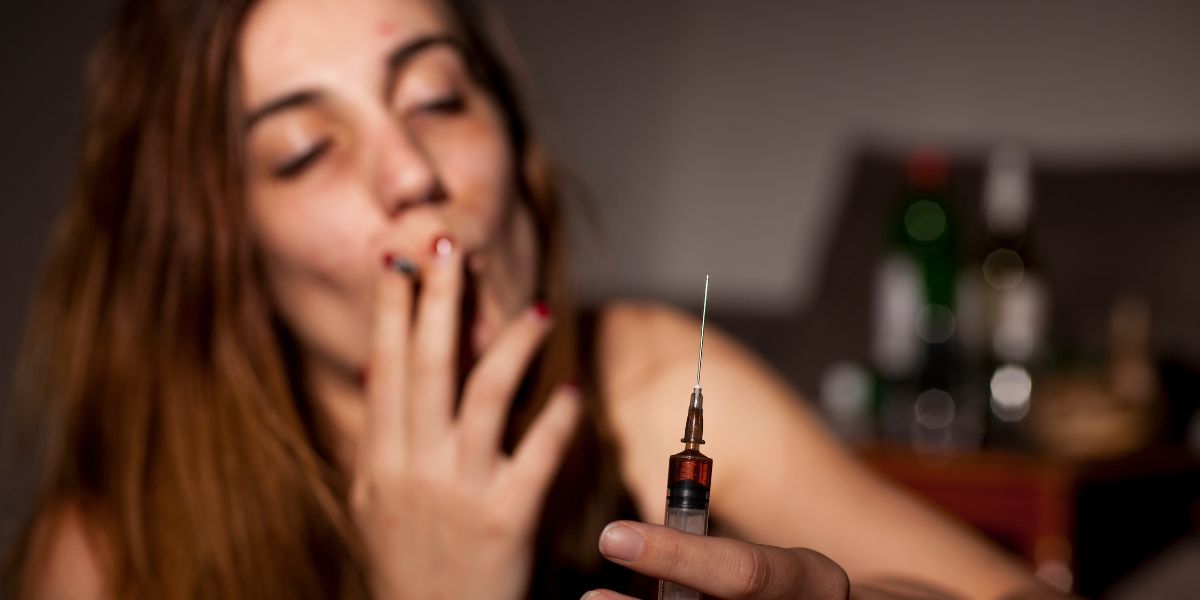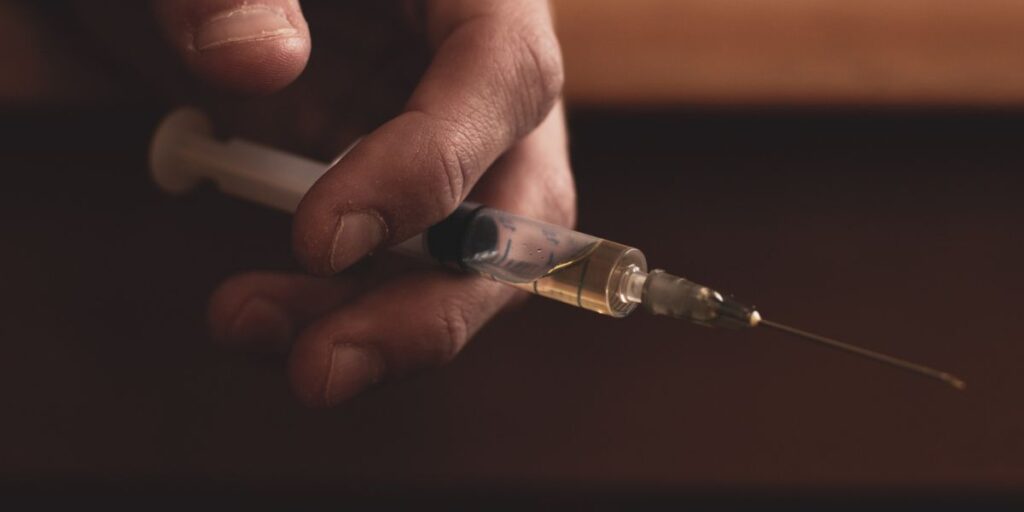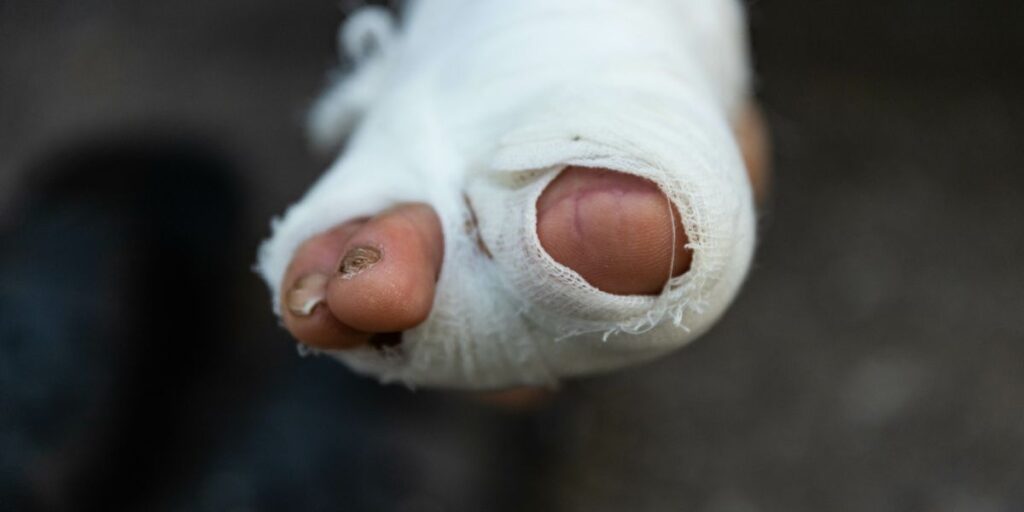Krokodil Drug Effects and Health Risks


Medical Writer:
Reviewer:

Johnny Kim
Executive Psychotherapist
Medical Writer:
Reviewer:

Johnny Kim
Executive Psychotherapist
Many health experts and law enforcement authorities consider krokodil to be “the world’s most dangerous drug,” though it remains relatively unheard of in the United States.
Krokodil, a homemade substance that emerged in Russia and Ukraine in the early 2000s, serves as a low-cost heroin substitute composed of codeine, gasoline, paint thinner, and other hazardous substances. Administered via injection(interlink “The Dangers of Needle Sharing”), it severely harms the skin and internal tissues.
Table of Contents
ToggleThe term “krokodil” is derived from the Russian and Ukrainian word for crocodile, alluding to the drug-induced green, black, and scaly skin appearance at the injection sites, a result of its corrosive nature leading to skin decay and ulcer formation.
It is a drug that gets people addicted quickly and harms the body badly, sometimes causing organs to fail, infections, and death. People who can’t get or buy other drugs often use it. This emphasizes the necessity of implementing strong programs to curb drug use and support people who are combating addiction.
The production of krokodil mirrors that of methamphetamine, conducted in improvised, unhygienic labs with readily available chemicals. These substances are detrimental, causing damage to the skin and internal organs, leading to irritation, infections, gangrene, and necrosis. In extreme cases, the affected limbs of users may self-amputate or decay.
The question arises: why would anyone deliberately use this extremely dangerous drug? The answer lies in its low cost, easy access, and the addictive nature of its primary component, desomorphine. Like other opioids, krokodil causes dependency, requiring continuous use to alleviate withdrawal symptoms. Consequently, people resorting to krokodil as a cheaper alternative to heroin often face intense addiction and potentially fatal consequences.
What Is Krokodil?
Desomorphine, commonly known as krokodil, stands as a dangerous, highly addictive substitute for heroin, concocted at home. This injectable substance, often found as a light brown liquid, can easily be mistaken for traditional heroin by users.
A semi-synthetic opioid, desomorphine is noted for being significantly more potent and addictive than morphine. It’s synthesized by processing codeine with various organic solvents, including paint thinner, gasoline, iodine, hydrochloric acid, or red phosphorous scraped from match tips. Desomorphine is classified as a Schedule I controlled substance in the United States. Contrastingly, in krokodil’s countries of origin, Russia and Ukraine, the codeine required for its production can be purchased without a prescription.
The inception of krokodil misuse traces back to Russia and Ukraine in the early 2000s, gradually permeating Europe. Since 2014, the United States recorded 18 confirmed instances of krokodil use, with no cases or fatalities reported in 2022.
The U.S. Drug Enforcement Agency, the DEA, attributes the domestic presence of krokodil to local production rather than importation. With the advent of the internet, accessing desomorphine recipes and production guides has become more accessible, leading the DEA and healthcare professionals to foresee a potential rise in krokodil use within the United States.

Krokodil Street Names
Street names for krokodil often mirror its catastrophic effects on the human body. A significant effect is the creation of scaly, greenish skin and open wounds that mimic crocodile scales, leading to its monikers like “the flesh-eating drug” or “the zombie drug” because of the gruesome appearance it can induce in users.
Medical professionals also use more graphic slang to convey the drug’s harsh effects, with terms such as “flesh rot” or “skin decay” underlining its capacity for destruction, causing severe tissue damage, gangrene, and sometimes necessitating amputation. The drug’s physical impacts are so extreme they are comparable to flesh-eating bacteria, causing swift and irreversible harm to skin and internal tissues.
The various street and medical slang names for krokodil highlight the grave risk posed by the drug and the severe damage it can inflict on users. Awareness of these effects is crucial to deter krokodil use and prevent the extensive damage it can wreak.
Common street names in English for krokodil include:
- Gator
- Poor man’s heroin
- Russian magic
- Kroc
- Zombie drug
- Flesh-eating drug
- Dil
- Croc
Krokodil Drug Effects
The effects and warnings associated with krokodil are comparable to those of other strong opioids. Nonetheless, because of its brief, effective period, people addicted to krokodil often use the drug repeatedly to sustain their high and prevent the onset of withdrawal symptoms.
Krokodil’s effects include:
- Intense happiness
- Breathing suppression
- Heat sensation at the point of injection
- Calming effect
- Feeling of unsteadiness
- Loss of consciousness
- Memory loss
- Confusion
- Diminished reflexes
- Slurred speech
- Development of tolerance
- Addiction
- Withdrawal symptoms
Krokodil is deemed the most hazardous drug globally because of the rapid onset of its deadly side effects, such as tissue decay and necrosis, leading to its nicknames like the flesh-eating drug or the zombie drug. Additionally, those who inject drugs face heightened risks of contracting HIV, hepatitis, and various other bloodborne and bacterial infections.
Health Risks
People using krokodil face serious health risks and side effects, including:
- Infections in soft tissues
- Permanent scarring and damage to soft tissues
- Swelling or blockage of blood vessels
- Collapsed veins
- Skin lesions and ulcers
- Intense limb swelling
- Lack of sleep
- Bone infections and death (osteonecrosis)
- Skin necrosis
- Gangrene
- Autoamputation (decay and falling off body parts)
- Extensive oral and dental harm
- Dry, flaky, discolored skin, termed as krokodil skin
- Damage to cartilage
- Poisoning from heavy metals
- Pneumonia
- Meningitis
- Surgical removal of affected areas
- Liver failure
- Kidney failure
- Brain damage
- Death
Determining the long-term effects of krokodil use poses challenges for researchers, as many people who receive emergency treatment fail to pursue subsequent care. Users who are monitored often succumb within two to three years following their initial use of the drug.

Krokodil Withdrawal Symptoms
Withdrawal from krokodil can start within two to three hours after the last dose, which is attributed to its brief period of effect. Krokodil users grappling with opioid use disorder experience withdrawal symptoms and risks similar to those associated with other opioids.
Symptoms of krokodil withdrawal include:
- Cravings for the drug
- Agitation
- Fatigue
- Changes in appetite
- Symptoms resembling the flu
- Sweating
- Chills
- General body soreness
- Pain in joints and bones
- Abdominal cramps
- Nausea
- Vomiting
- Diarrhea
- Tremors
- Thoughts of suicide
Krokodil use leads to severe wounds and infections, necessitating prompt medical care. Yet, because of shame and stigma, many users delay seeking treatment. Healthcare providers are tasked with mitigating the intense withdrawal symptoms and offering care to deter patients from reverting to krokodil as a form of self-medication for pain and withdrawal symptoms.
People prepared to confront their drug dependency will find the most outstanding safety and advantage in enrolling in a supervised medical detox program. Within this setting, a medical team diligently monitors vital signs. It administers comprehensive medical support during the withdrawal phase, aiming to safeguard patients, minimize the likelihood of relapse, and avert the onset of extended withdrawal syndrome.
Krokodil Addiction Treatment
To address krokodil addiction, prompt action is crucial. For those prepared to tackle addiction, immediate assistance is accessible. At White Oak Recovery Center, we are committed to giving every individual a chance to regain their life.
At WORC, each patient benefits from a personalized treatment plan tailored to the specific root causes of their substance use and co-occurring disorders. Our experienced and empathetic team fosters a supportive and therapeutic environment in our residential treatment center with an around-the-clock medical detox program.
Our treatments and therapies, grounded in scientific evidence, equip you with the necessary skills, strategies, and independence to surmount addiction and harmful habits
Contact us today to speak with one of our compassionate treatment specialists and embark on your journey toward lasting recovery.

Am I covered for addiction treatment?
Your insurance may cover treatment. Call now for an entirely free and confidential assessment. Recovery starts with a phone call.

- Sergent, Jean-Francois, et al., “Krokodil (Desomorphine)- Induced Osteonecrosis of the Maxilla: A Case Report and Literature Review.” Journal of Oral Medicine and Oral Surgery.
- Emma, E, et al., “Effects of Krokodil (Desomorphine) Use on Oral Health-A Systematic Review.” BR Dent J., Nov. 2019.
- Winborn, Jessica N., “Metabolism and Analysis of Desomorphine.” National Criminal Justice Reference Service
- Gahr, Maximillian, et al., “Desomorphine Goes ‘Crocodile.’” J Addict Dis., 2012.
Medical Disclaimer:







